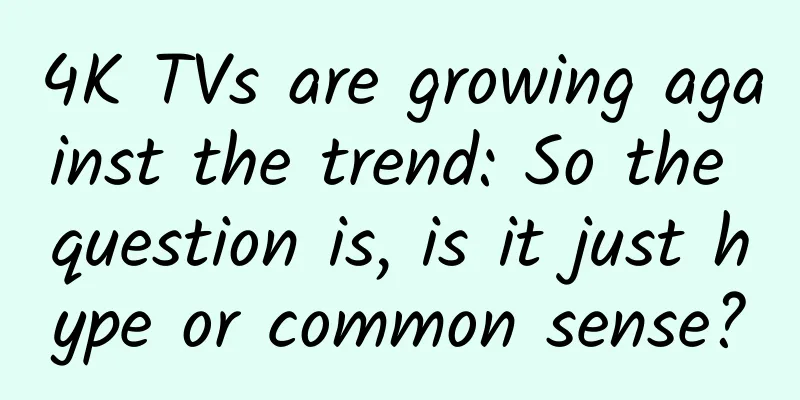Why can't we breathe through both nostrils at the same time?

|
Review expert: Yuan Xiandao (Deputy Chief Physician of Otolaryngology Department, Beijing Anzhen Hospital, Capital Medical University) Let's do a little experiment. When you block one of your nostrils with your finger, it's great, and you can breathe smoothly. Then you block the other nostril, what's going on? Why is your nose blocked? Why do you feel that you can't breathe smoothly? ▲Source: The Paper Now think about it again, when we have a cold, our noses not only runny, but also blocked. Often one nostril is ventilated while the other is blocked, and every few hours the two nostrils are blocked alternately, one blocked and the other blocked, over and over again, like suffocation, what is happening? Nasal circulation Under normal conditions, one of our nostrils is in the main working state for breathing, while the other nostril breathes very little and is in a temporary resting state. After a period of time, the other nostril starts to work, and the previously working nostril enters a resting state. This process of alternating work and rest is called the nasal cycle. ▲Source: Baidu Experience That is to say, most of the air we inhale and exhale usually goes in and out through only one nostril, and only a small part of the air goes through the other nostril, so one nostril is always open and the other is relatively blocked. In fact, whether it is normal or in a cold state, nasal circulation always exists. ▲Source: Wikipedia The nasal cycle is usually more than 2 hours, and as we age, the cycle will gradually become longer, and the longest cycle can even reach 8 hours. The autonomic nervous system in our body is responsible for swapping the roles of the two nostrils to ensure the smooth completion of this alternation process. How about breathing out of one nostril? Does this subvert your imagination a little? Two functions of nasal circulation We all know that the nose is the gateway for the lungs to connect to the world, and our lungs always need warm, moist and clean air. At this time, the nose acts as a "thermospheric bucket" and "humidifier", making the air we breathe warmer and more moist. If we breathe in a lot of cold, dry air, it can damage the nasal mucosa and even cause nasal rupture and bleeding. The fine hairs that keep the respiratory tract moist are called cilia. Long-term work will dry out the cilia, making them unable to carry mucus and airborne particles out of the lungs. By limiting the amount of air flowing through the cilia, they can get a temporary rest and relaxation, and nasal circulation is a good solution. So we have to admit this famous saying: Rest is for better work! ▲Source: Baidu Encyclopedia Furthermore, smell is the detection of free-floating chemicals in the air that meet and form chemical bonds with receptors in our noses, which then send a signal to the brain, which then knows: "Oh, I seem to smell something." Some odor chemicals are more likely to attach to nasal receptors. These "stickier" odors require faster airflow in order for the receptors to capture them, otherwise they will be stuck at the entrance of the nose and not be detected by the receptors behind. In contrast, less "sticky" odors require slower airflow so that they have a chance to bind to the receptors before flowing through the nasal cavity. The nasal circulation can make good use of this difference, restricting airflow on one side and unblocking airflow on the other side, allowing us to smell a wider range of odors and a wider variety of odors. ▲Source: Sinomarin Let's turn the topic back to the nose when you have a cold. When the human body has a cold, it is infected by viruses, bacteria and other pathogens, and the capillaries and lymphatic vessels in the nose will expand, causing the glands to enlarge, the nasal mucosa to become congested and swollen, and a lot of mucus will be secreted in the nasal cavity. The airflow rate of the nostrils at rest is very low, but when you have a cold, the airflow is completely blocked due to mucosal edema and mucus secretion, giving you the feeling that only one nostril is left for breathing. In this way, the nostril we breathe through changes from one side strong and the other weak to one side blocked and the other not blocked. Especially when you lie on your side because of a cold, nasal mucus will gather to one side due to the influence of gravity, pressure, etc., and the feeling of nasal congestion will worsen. We need to constantly adjust the side-lying direction. If the left side is blocked, lie on the right side, and if the right side is blocked, lie on the left side. Try to reduce the accumulation and pressure of nasal mucus and keep breathing relatively unobstructed. ▲Source: pixabay If you catch a cold accidentally, you can promote blood circulation by applying hot compresses, cleaning the nasal cavity, and massaging acupoints, so as to relieve the edema and exudation of the nasal mucosa, thereby relieving the symptoms of nasal congestion to a certain extent. Of course, I hope everyone can take good care of themselves, after all, catching a cold is really too uncomfortable! |
<<: Parasites can control their hosts. Can humans also be controlled by parasites?
>>: The "super battery" that can store 800,000 kWh of electricity is here. How does it work?
Recommend
New policy on online ride-hailing: Who is being “regulated”?
The era of online taxi-hailing is over, and legal...
How to increase website user activity by attracting new users and promoting activation
User activity is an eternal pain in the hearts of...
Things to note when developing custom mini programs
We can observe from the WeChat platform that it n...
How can you make a product go viral even with minimal advertising?
Why is it that even though some products are rare...
Which type of promotion is more effective: paid promotion, free promotion, or social media promotion?
When farming on the Internet, traffic is like the...
Come and take a look at the marketing tactics that leverage Christmas!
The annual Christmas is coming again! Is the plan...
To open the door to the "lost world", the "key" is actually in the poop?
The mass extinction event at the end of the Permi...
Methods and strategies for community operation!
I believe that community operation is a topic tha...
A former front-line operations staff member of Suning.com shared: What do you do as an operations staff member all day?
Operation , a high-sounding job title in the Inte...
Water army or tap water? A glimpse into the development of popular IP
IP is a hot word this year. If a corporate boss d...
Xu Jiaxi from Unicorn Think Tank: In-depth report on the ventilator industry
Source: Unicorn Think Tank Source: Industrial Sec...
You would never guess: These people love to spend money on Apple
Apple has now become a global trend brand with a ...
How to deal with the crash of enterprise server hosting system?
In early July, FileBlaze, headquartered in San Fr...
Do shared electric bikes appearing on Beijing streets again have a future?
Recently, a group of uniform yellow electric bicy...
What is Wenchang Tower? How to choose Wenchang Tower?
Wenchang Tower is one of the common Feng Shui orn...

![A comprehensive guide to APP promotion and operation knowledge: [Mobile phone pre-installation & silent installation]](/upload/images/67cc3ea240db2.webp)







